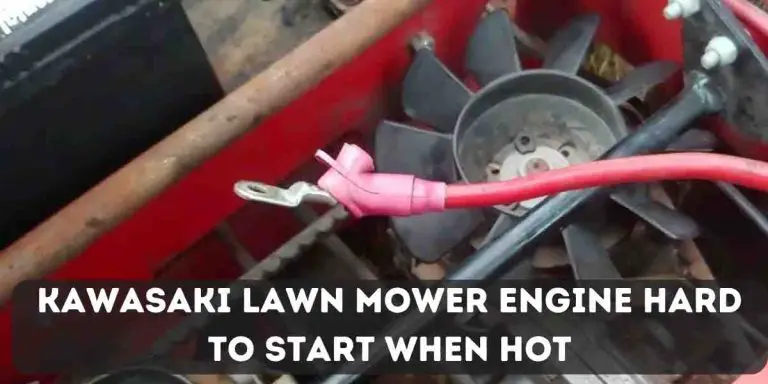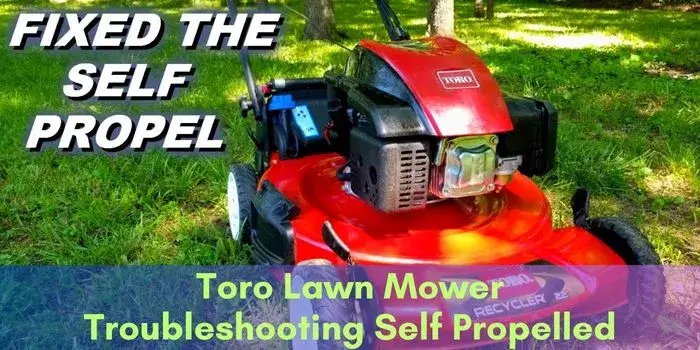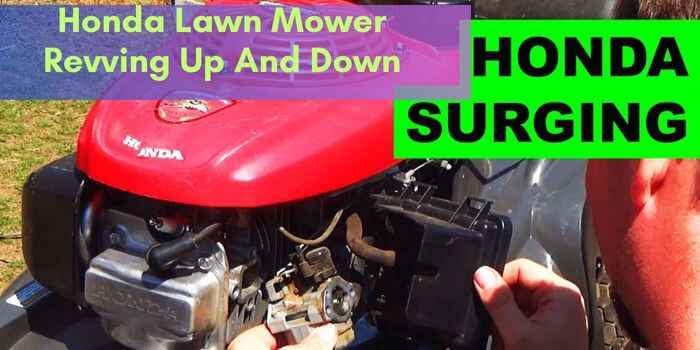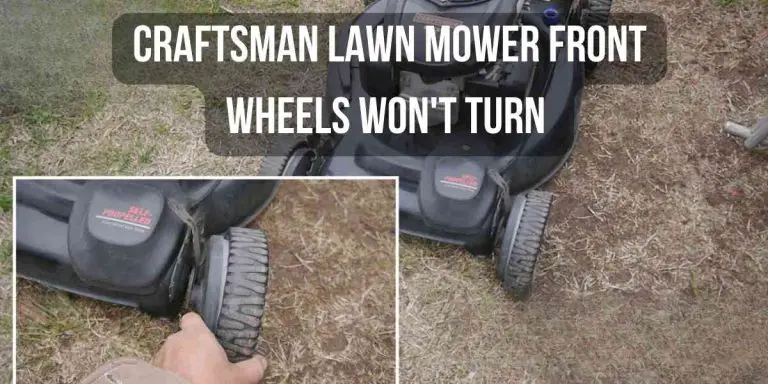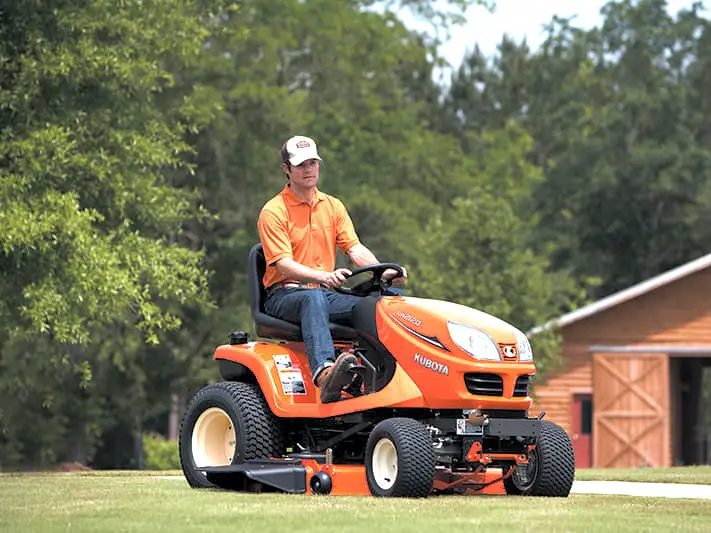Husqvarna Self Propelled Lawn Mower Problems: Troubleshoot & Conquer!
Husqvarna self-propelled lawn mower problems can be resolved by troubleshooting common issues and performing regular maintenance. Now let’s take a closer look at some of the common problems you may encounter with your Husqvarna self-propelled lawn mower and how to address them.
Is your Husqvarna self-propelled lawn mower giving you trouble? Don’t worry! We will explore some common problems that may arise with your mower and provide you with practical solutions to fix them. Maintaining a healthy lawn becomes effortless with a reliable and well-functioning mower.
However, these machines can encounter issues over time due to frequent use or lack of maintenance. By understanding the common problems that may arise with your Husqvarna self-propelled lawn mower and learning how to troubleshoot them, you can ensure a longer lifespan for your machine and a beautifully manicured lawn. So, let’s dive in and discover the solutions to common Husqvarna self-propelled lawn mower problems.
Common Issues With Husqvarna Self Propelled Lawn Mowers
Common Issues with Husqvarna Self Propelled Lawn Mowers
Engine Failure
If you own a Husqvarna self propelled lawn mower, you may encounter engine failure at some point. This can be a frustrating problem, as it prevents you from effectively mowing your lawn. There are a few common reasons why your mower’s engine may fail:
- Lack of proper maintenance: Regular maintenance is essential to keep your lawn mower running smoothly. Neglecting routine tasks such as oil changes, air filter cleaning, and spark plug replacement can lead to engine issues.
- Fuel-related problems: Using stale or contaminated fuel can cause problems with the engine. It is important to use fresh, clean gasoline and follow the manufacturer’s recommendations for fuel mixture.
- Ignition system failure: A faulty ignition system can prevent the engine from starting or cause it to stall during operation. Checking and replacing the spark plug and ignition coil as needed can help resolve this issue.
Difficulty Starting the Mower
Another common issue with Husqvarna self propelled lawn mowers is difficulty starting the mower. This can be a frustrating experience, especially when you’re eager to get your lawn mowing task done. Here are a few possible reasons behind starting problems:
- Bad spark plug: A worn-out or dirty spark plug can make it difficult to start the mower. Regularly inspecting and cleaning or replacing the spark plug can help resolve this issue.
- Fuel supply issues: If the fuel isn’t reaching the engine properly, your mower may have trouble starting. Check the fuel line and ensure it is free from clogs or damage.
- Primer bulb malfunction: The primer bulb is responsible for providing the initial fuel to the carburetor. If it is damaged or not functioning correctly, it can cause starting problems. Inspecting and replacing the primer bulb as necessary can help get your mower running smoothly again.
Uneven Cutting
One of the primary purposes of a self propelled lawn mower is to achieve an even and well-maintained lawn. However, if your Husqvarna mower is leaving behind uneven patches of grass, there could be a few underlying issues:
- Dull or damaged blades: Over time, the blades on your mower can become dull or damaged, leading to uneven cutting. Regularly sharpening or replacing the blades can help ensure a more uniform cut.
- Uneven deck adjustment: If the cutting deck is not properly aligned or adjusted, it can result in an uneven cutting pattern. Refer to the mower’s manual for instructions on how to properly adjust and level the cutting deck.
- Clogged discharge chute: A clogged discharge chute can cause clumps of grass to accumulate, resulting in uneven cutting. Regularly cleaning the discharge chute can prevent this issue from occurring.
By understanding these common issues with Husqvarna self propelled lawn mowers, you can troubleshoot and address problems effectively. Regular maintenance, proper fueling, and routine inspections can help ensure your mower operates at its best, providing you with a beautifully maintained lawn.
Troubleshooting Common Husqvarna Self Propelled Lawn Mower Problems
If you own a Husqvarna self propelled lawn mower, you know that it can be a powerful tool for maintaining your lawn. However, like any machine, it’s not uncommon to encounter problems that may hinder its performance. When your Husqvarna self propelled lawn mower starts acting up, it’s important to troubleshoot the issue and address it promptly. In this blog post, we will guide you through some common problems you might face with your Husqvarna self propelled lawn mower and provide step-by-step instructions on how to fix them.
Checking fuel and oil levels
One of the most common issues with a Husqvarna self propelled lawn mower is related to fuel and oil levels. If your mower is not starting or is stalling frequently, the first thing you should check is the fuel tank. Ensure that there is enough fuel in the tank and that it is not contaminated. Additionally, check the oil level in the engine.
Here’s how to check the fuel and oil levels in a Husqvarna self propelled lawn mower:
- Make sure the mower is on a flat surface and the engine is off.
- Locate the fuel tank, usually positioned on the top or side of the mower.
- Open the fuel tank cap and visually inspect the fuel level. If the fuel level is low, refill it with fresh fuel.
- To check the oil level, locate the oil dipstick on the engine.
- Remove the dipstick and wipe off any oil from it. Then, reinsert the dipstick into the engine without screwing it in.
- Remove the dipstick again and check the oil level. It should be between the minimum and maximum markings on the dipstick.
- If the oil level is low, add the recommended type and amount of oil for your specific Husqvarna model.
Examining the spark plug
A faulty spark plug can cause problems with your Husqvarna self propelled lawn mower’s ignition and performance. If you notice that the mower is hard to start, misfires, or runs rough, it’s time to examine the spark plug.
Here’s how to examine the spark plug in a Husqvarna self propelled lawn mower:
- Make sure the engine is off and the mower is on a flat surface.
- Locate the spark plug wire and follow it to the spark plug boot.
- Disconnect the spark plug wire from the spark plug boot.
- Use a spark plug wrench to loosen and remove the spark plug from the engine.
- Inspect the spark plug for fouling, damage, or excessive carbon buildup.
- If the spark plug appears dirty or damaged, it should be replaced with a new one. Consult the owner’s manual for the correct spark plug type and gap for your Husqvarna mower model.
Cleaning or replacing the air filter
A clogged air filter can restrict airflow to the engine and cause performance issues with your Husqvarna self propelled lawn mower. If you notice reduced power, difficulty starting, or black smoke coming from the exhaust, it’s likely that the air filter needs attention.
Here’s how to clean or replace the air filter in a Husqvarna self propelled lawn mower:
- Turn off the engine and allow it to cool down.
- Locate the air filter housing, usually positioned on the side or top of the engine.
- Remove the cover or housing to access the air filter.
- If the air filter is made of foam, wash it with soap and water, then squeeze out any excess moisture. Allow the filter to dry completely before reinstallation.
- If the air filter is paper or a disposable type, replace it with a new one. Make sure to use the correct filter specified by the manufacturer for your Husqvarna mower model.
- Reinstall the air filter and ensure that the cover or housing is secured properly.
By following these troubleshooting steps for common Husqvarna self propelled lawn mower problems, you can keep your mower running smoothly and enjoy a well-maintained lawn throughout the mowing season. Remember to always refer to the owner’s manual for specific instructions and consult a professional if you are unsure or need further assistance.
Addressing Engine Failure In Husqvarna Self Propelled Lawn Mowers
Husqvarna self propelled lawn mowers are popular among homeowners for their efficient performance and ability to make yard maintenance a breeze. However, like any mechanical equipment, these lawn mowers are not immune to problems, and one of the most frustrating issues that can arise is engine failure. If you find yourself facing this problem, don’t panic! In this article, we will guide you through the process of addressing engine failure in Husqvarna self propelled lawn mowers, focusing on inspecting the fuel system, checking the ignition system, and examining the carburetor.
Inspecting the Fuel System
When it comes to engine failure, the fuel system is often a culprit. To determine if your Husqvarna self propelled lawn mower’s engine failure is caused by a fuel system issue, follow these steps:
- Check the fuel tank: Ensure that there is an adequate amount of fresh gasoline in the fuel tank. Consider checking for any signs of contamination or debris that may be obstructing the fuel flow.
- Inspect the fuel line: Carefully examine the fuel line for any cracks, leaks, or blockages. Address any issues promptly to prevent further complications.
- Clean or replace the fuel filter: A clogged fuel filter can restrict proper fuel flow to the engine. Remove the filter and clean it thoroughly or replace it if necessary.
- Examine the carburetor: A malfunctioning carburetor can significantly impact fuel delivery. You will find more information on examining the carburetor in the next section.
Checking the Ignition System
The ignition system plays a crucial role in the proper functioning of your Husqvarna self propelled lawn mower’s engine. To identify any ignition system-related problems, follow these steps:
- Inspect the spark plug: Remove the spark plug and examine its condition. Check for any signs of damage, wear, or fouling. Clean or replace the spark plug if necessary.
- Check the ignition coil: Ensure that the ignition coil is securely connected and free from dirt or corrosion. A faulty ignition coil can cause engine misfires or outright failure.
- Inspect the wiring: Carefully examine the wiring connections leading to the ignition system components. Look for any loose connections, frayed wires, or other signs of damage. Repair or replace any faulty wiring as needed.
Examining the Carburetor
A well-functioning carburetor is vital for the optimal performance of your Husqvarna self propelled lawn mower’s engine. Here’s how you can examine the carburetor:
- Remove the air filter: Start by removing the air filter cover and taking out the air filter. Check for any signs of dirt, clogs, or damage. Clean or replace the air filter as necessary.
- Inspect the carburetor body: Carefully examine the carburetor body for any visible damage or signs of wear. Check if any screws or adjustments are loose and tighten them if necessary.
- Clean the carburetor: Use a carburetor cleaner to remove any dirt, debris, or varnish buildup from the carburetor. Pay close attention to the tiny orifices and jets. Reassemble the carburetor after cleaning and ensure it is properly installed.
By following these steps and addressing potential issues in the fuel system, ignition system, and carburetor, you can improve your chances of resolving engine failure in your Husqvarna self propelled lawn mower. However, if despite your efforts, the problem persists, it may be best to consult a professional technician for further assistance.
Resolving Difficulties In Starting Husqvarna Self Propelled Lawn Mowers
Starting your Husqvarna self-propelled lawn mower should be a breeze, but sometimes we encounter problems that hinder the process. If you’re facing challenges with getting your Husqvarna mower started, this section will guide you through troubleshooting various potential issues. By resolving these difficulties, you can maintain your lawn mower’s optimal performance and ensure a hassle-free mowing experience.
Troubleshooting the Recoil Starter
The recoil starter is a crucial component of your Husqvarna self-propelled lawn mower as it enables you to initiate the ignition process. When experiencing difficulties with starting your mower, it’s essential to examine the recoil starter for potential issues. Here are a few troubleshooting steps to follow:
- Inspect the recoil starter assembly for any visible damage or signs of wear and tear.
- Ensure that the recoil starter rope is properly seated and is not jammed or tangled.
- Try pulling the recoil starter rope firmly and steadily to check if it engages the engine. If it feels loose or disconnected, further investigation is necessary.
- Consider lubricating the recoil starter mechanism with a high-quality lubricant to optimize its functionality.
Testing the Safety Features
Husqvarna self-propelled lawn mowers are equipped with various safety features that may affect the starting process. If your mower fails to start, it’s crucial to assess these safety features to identify any potential issues. Here’s how to test the safety features:
- Check if the mower’s safety switch, typically located on the handle, is fully engaged and operational.
- Inspect the blade control lever to ensure it is in the disengaged position for starting the mower. If engaged, the engine will not start.
- Verify that the parking brake is properly engaged, as this may interrupt the ignition process.
- Inspect the fuel tank cap to ensure it is securely tightened. A loose cap may result in fuel supply issues.
Evaluating the Battery and Electrical Components
For models with an electric start feature, the battery and other electrical components play a crucial role in initiating the engine. If you’re facing difficulties starting your Husqvarna self-propelled lawn mower equipped with an electric start, consider the following steps:
Table:
| Potential Battery and Electrical Component Issues | |
|---|---|
| Battery Check | Inspect the battery terminals and cables for any corrosion or loose connections. Ensure the battery is adequately charged to provide sufficient power for starting the engine. |
| Spark Plug Check | Examine the spark plug for signs of damage or fouling. Use a spark plug tester to verify if it is producing a strong spark. Replace if necessary. |
| Ignition Switch Check | Ensure the ignition switch is in the “on” position. Check for any loose or damaged wiring that may affect the electrical circuit. |
By conducting a thorough evaluation of the battery and electrical components, you can uncover potential issues and take the necessary steps to rectify them.
By troubleshooting the recoil starter, testing the safety features, and evaluating the battery and electrical components, you can effectively resolve difficulties in starting your Husqvarna self-propelled lawn mower. Following these steps will help you keep your mower functioning optimally and ensure a frustration-free mowing experience.
Correcting Uneven Cutting Issues With Husqvarna Self Propelled Lawn Mowers
Correcting uneven cutting issues with Husqvarna self-propelled lawn mowers is crucial to maintain a well-manicured lawn. Uneven cutting can result in an unattractive appearance and hinder the overall health of your turf. To ensure a consistently even cut, there are a few key areas to focus on: ensuring the blades are sharp and properly installed, adjusting the cutting height, and examining the wheels for damage or misalignment. By addressing these issues, you can achieve the beautiful, evenly cut lawn you desire.
Ensuring the blades are sharp and properly installed
One of the main causes of uneven cutting with Husqvarna self-propelled lawn mowers is dull or improperly installed blades. Blunt blades can tear at the grass instead of cutting it cleanly, resulting in an uneven appearance. To remedy this, regularly inspect the blades for signs of wear and ensure they are sharp. It’s also important to check that the blades are properly installed and securely fastened to the mower. If you’re unsure how to sharpen the blades or install them correctly, refer to your mower’s user manual or consult a professional.
Adjusting the cutting height
The cutting height of your Husqvarna self-propelled lawn mower plays a significant role in achieving an even cut. If the cutting height is set too low, the blades may scalp the grass, leaving unsightly patches. On the other hand, if the cutting height is set too high, the mower may struggle to cut through the grass evenly. To correct this, refer to your mower’s instruction manual to determine the optimal cutting height for your specific grass type and adjust the settings accordingly. Regularly check and adjust the cutting height as necessary to ensure an even, well-maintained lawn.
Examining the wheels for damage or misalignment
The condition and alignment of your Husqvarna self-propelled lawn mower’s wheels can also contribute to uneven cutting. Damaged or misaligned wheels can cause the mower to tilt or veer to one side, resulting in an uneven cut. Inspect the wheels regularly for any signs of wear, damage, or misalignment. Look for flat spots, worn bearings, or loose connections. If you notice any issues, replace or repair the wheels as necessary. Additionally, ensure that all wheels are properly aligned and adjusted according to your mower’s specifications.
By addressing these common issues, you can correct uneven cutting problems with your Husqvarna self-propelled lawn mower. Remember to regularly inspect and maintain your mower’s blades, adjust the cutting height appropriately, and keep the wheels in proper condition. Taking these steps will help you achieve a consistently even cut and maintain a beautiful, healthy lawn.
Preventive Maintenance Tips For Husqvarna Self Propelled Lawn Mowers
Regularly maintaining your Husqvarna self propelled lawn mower is crucial to ensure optimal performance and extend its lifespan. By following these preventive maintenance tips, you can avoid common problems and keep your mower running smoothly throughout the mowing season.
Regularly cleaning the mower
One of the first steps in maintaining your Husqvarna self propelled lawn mower is to regularly clean it. Grass clippings, debris, and dirt can accumulate over time and affect the mower’s performance. To clean your mower:
- Turn off the engine and disconnect the spark plug wire for safety.
- Use a brush or compressed air to remove debris from the mower deck, wheels, and undercarriage.
- Inspect the mower blade for any signs of damage or dullness. If necessary, sharpen or replace the blade.
- Make sure to clean the air filter and replace it if it’s dirty or clogged.
Changing the oil and filters
Regularly changing the oil and filters in your Husqvarna self propelled lawn mower is essential to maintaining its performance and longevity. Here’s how you can do it:
| Task | Frequency |
|---|---|
| Change the oil | After every 25 hours of use or once per mowing season |
| Replace the oil filter | Every other oil change |
| Replace the fuel filter | Once per mowing season |
To change the oil and filters:
- Start by running the engine for a few minutes to warm up the oil, making it easier to drain.
- Disconnect the spark plug wire to prevent accidental starts.
- Position a drain pan under the mower and remove the oil drain plug to drain the old oil.
- Replace the oil filter and fuel filter according to the recommended frequency.
- Refill the engine with the recommended oil and dispose of the old oil responsibly.
Lubricating moving parts
Proper lubrication ensures smooth operation and prevents premature wear on the mower’s moving parts. Follow these steps to lubricate your Husqvarna self propelled lawn mower:
- Disconnect the spark plug wire as a safety precaution.
- Apply a lithium-based grease to the pivot points of the self propelled drive system, ensuring smooth movement.
- Lubricate the wheels, especially the axles and bearings, to prevent friction.
- Apply a light oil or silicone lubricant to the control cables to maintain their flexibility and prevent binding.
By regularly cleaning your mower, changing the oil and filters, and lubricating the moving parts, you can prevent common problems and keep your Husqvarna self propelled lawn mower in excellent working condition for years to come.
Seeking Professional Help For Husqvarna Self Propelled Lawn Mower Problems
When to consult a certified technician
When it comes to dealing with Husqvarna self propelled lawn mower problems, there may come a time when you need to seek professional help. While some minor issues can be resolved by the owner with a little troubleshooting, more complex problems require the expertise of a certified technician. By consulting a professional, you can ensure that your lawn mower is repaired correctly and efficiently, saving you both time and frustration.
Finding authorized service centers
When seeking professional help for your Husqvarna self propelled lawn mower problems, it’s important to find authorized service centers that specialize in repairing this brand of equipment. Authorized service centers have technicians who are trained specifically to work on Husqvarna lawn mowers, meaning they have extensive knowledge and experience with these machines. This increases the likelihood of a successful repair and ensures that your mower is in good hands. To find authorized service centers near you, you can visit the official Husqvarna website or contact their customer service for assistance.
Warranty considerations
Before seeking professional help for your Husqvarna self propelled lawn mower problems, it’s important to consider the warranty on your machine. Husqvarna offers warranties on their lawn mowers, which can cover certain repairs and replacements within a specified period. Be sure to check the terms and conditions of your warranty, as using an unauthorized repair service may void it. To ensure that your warranty remains intact, it is recommended to take your lawn mower to an authorized service center or consult with the manufacturer directly. This way, you can have peace of mind knowing that your repairs are covered and your mower will be restored to optimal functionality.
Frequently Asked Questions Of Husqvarna Self Propelled Lawn Mower Problems
Why Did My Self Propelled Lawn Mower Stopped Propelling?
Your self-propelled lawn mower may have stopped propelling because of a worn-out drive belt, a damaged transmission, or a faulty drive system. Check these parts for any signs of wear or damage, and replace them if necessary to restore the self-propelling functionality of your mower.
How Long Should A Self Propelled Lawn Mower Last?
A self propelled lawn mower should last for about 8-10 years with proper maintenance and regular usage. Performing routine maintenance tasks like oil changes, blade sharpening, and air filter cleaning can help extend its lifespan.
Why Is My Husqvarna Push Mower Running Weak?
If your Husqvarna push mower is running weak, it could be due to several reasons like a clogged air filter, dirty spark plug, low fuel levels, or a worn-out blade. Regular maintenance and checking these components can help improve its performance.
How Do You Adjust A Self Propelled Husqvarna?
To adjust a self-propelled Husqvarna, follow these steps: 1. Locate the adjustment lever on the handle. 2. Push the lever forward to increase speed or backward to decrease speed. 3. Make small adjustments until you find the desired speed. 4. Test the self-propelled feature by walking behind the mower.
5. Repeat the process as needed for a comfortable mowing experience.
Conclusion
To sum up, understanding the problems that can arise with Husqvarna self-propelled lawn mowers is crucial for a seamless gardening experience. From issues with the engine to difficulties in maneuvering, these common problems can affect the efficiency and performance of the mower.
By being aware of these challenges, homeowners can take proactive steps to prevent or address them, ensuring a well-kept and manicured lawn. Regular maintenance, following the manufacturer’s guidelines, and seeking professional help when needed are essential for keeping Husqvarna self-propelled lawn mowers in top condition.
Happy mowing!


